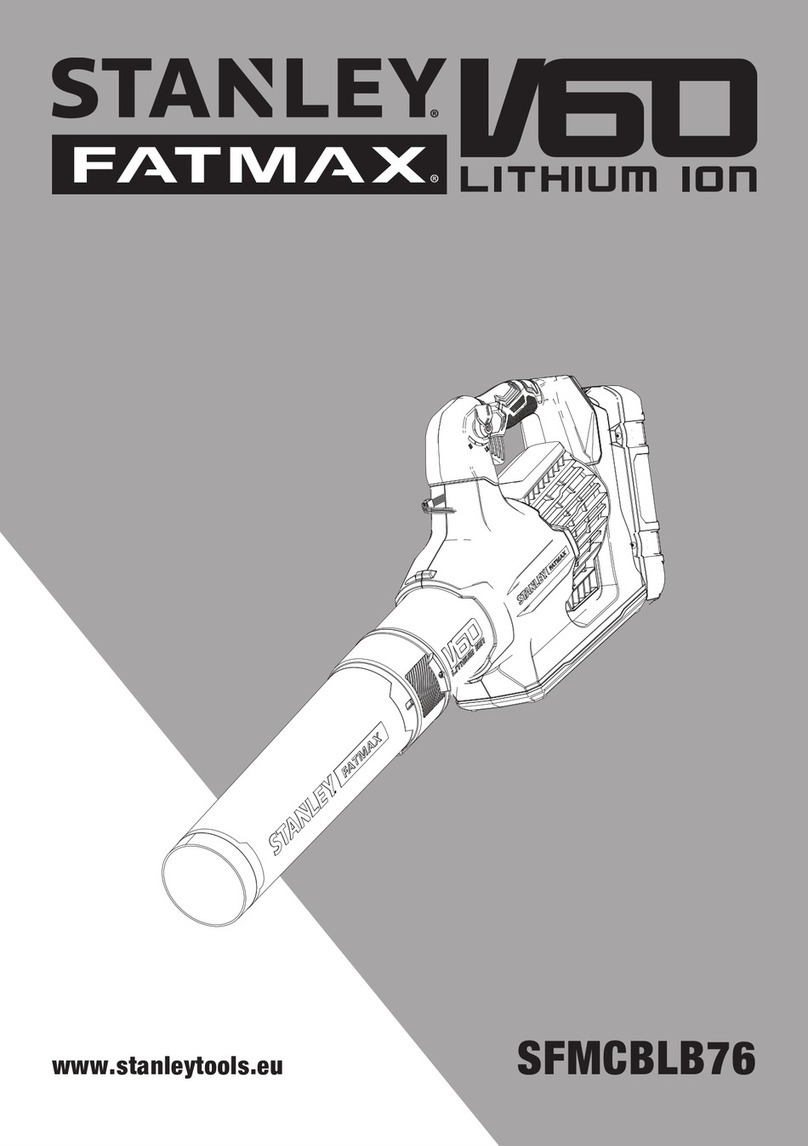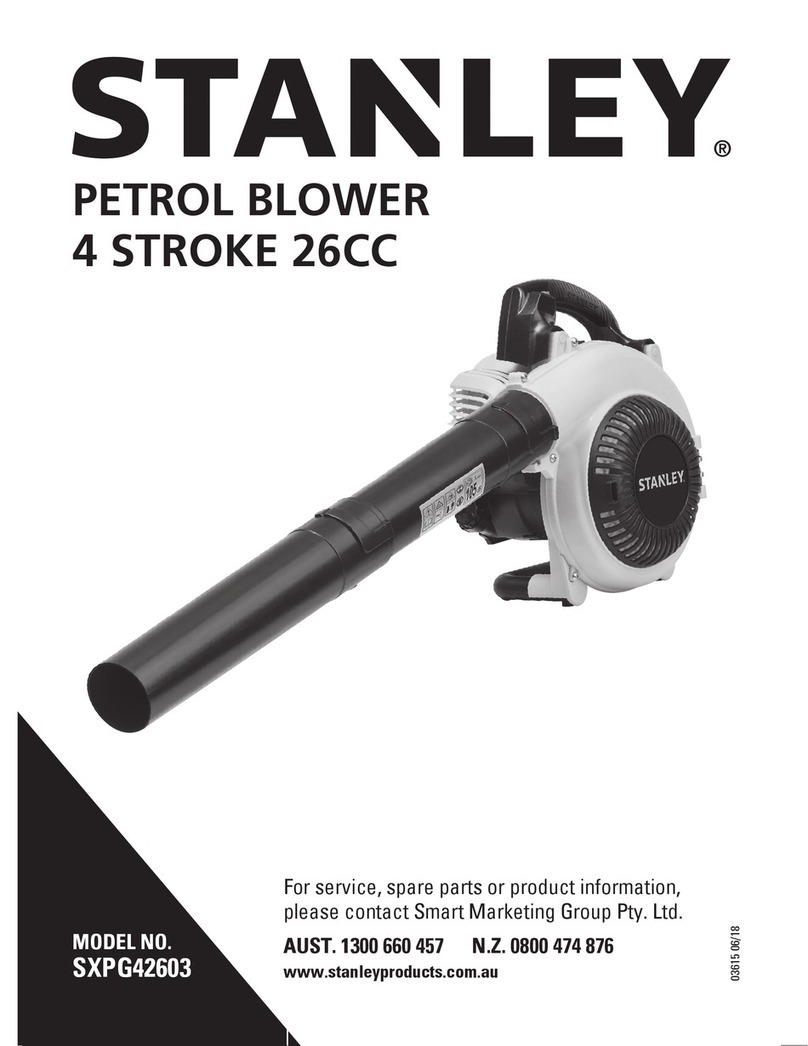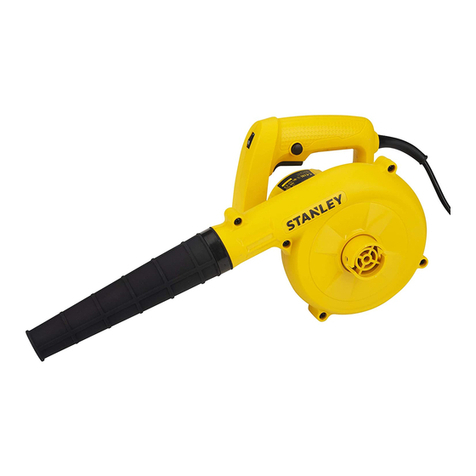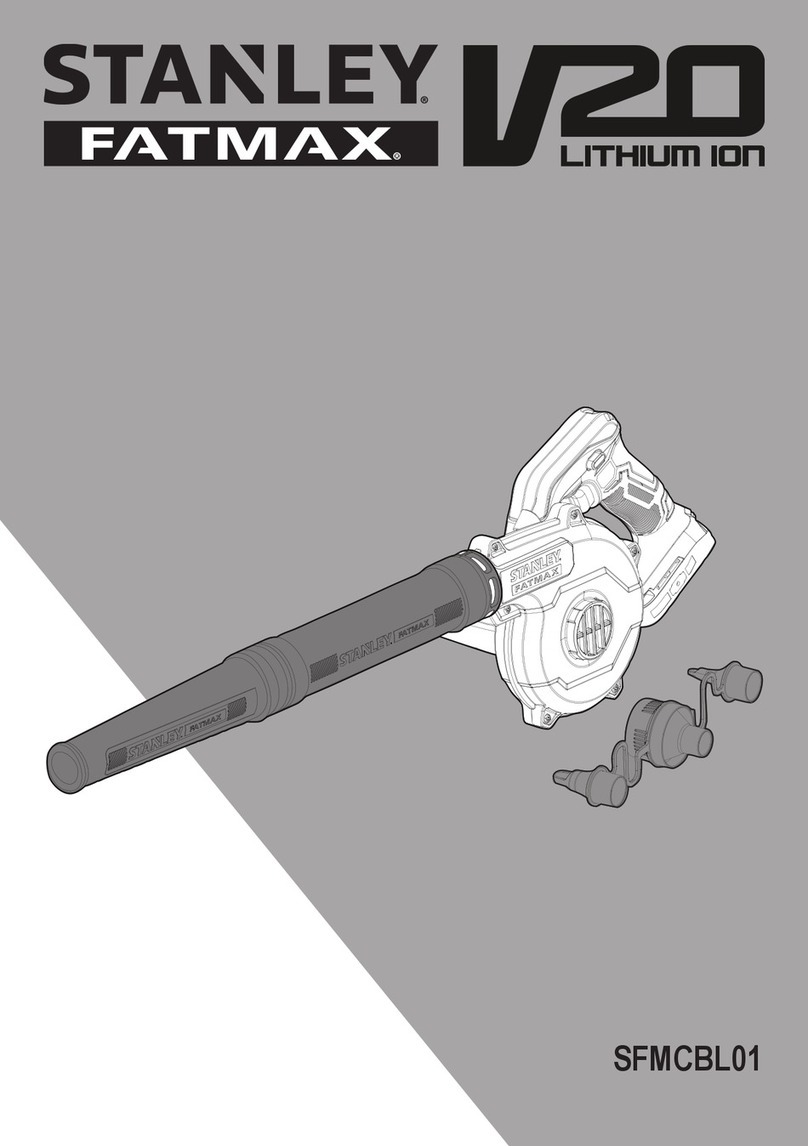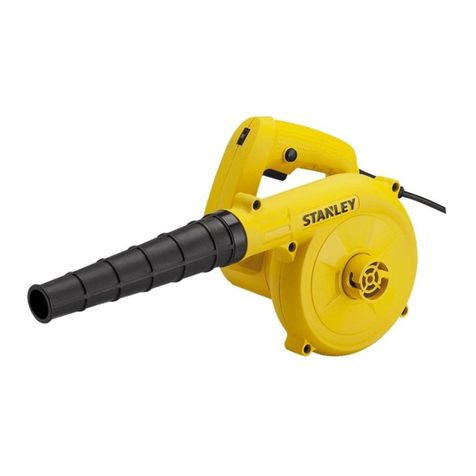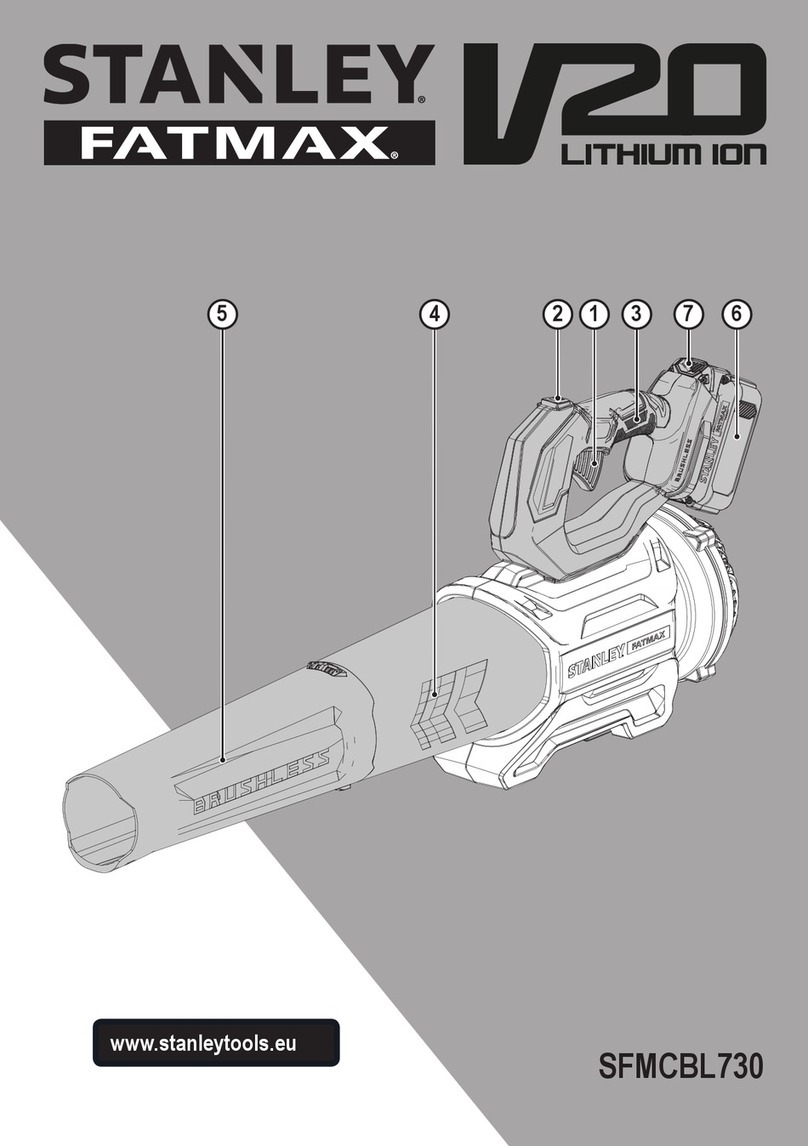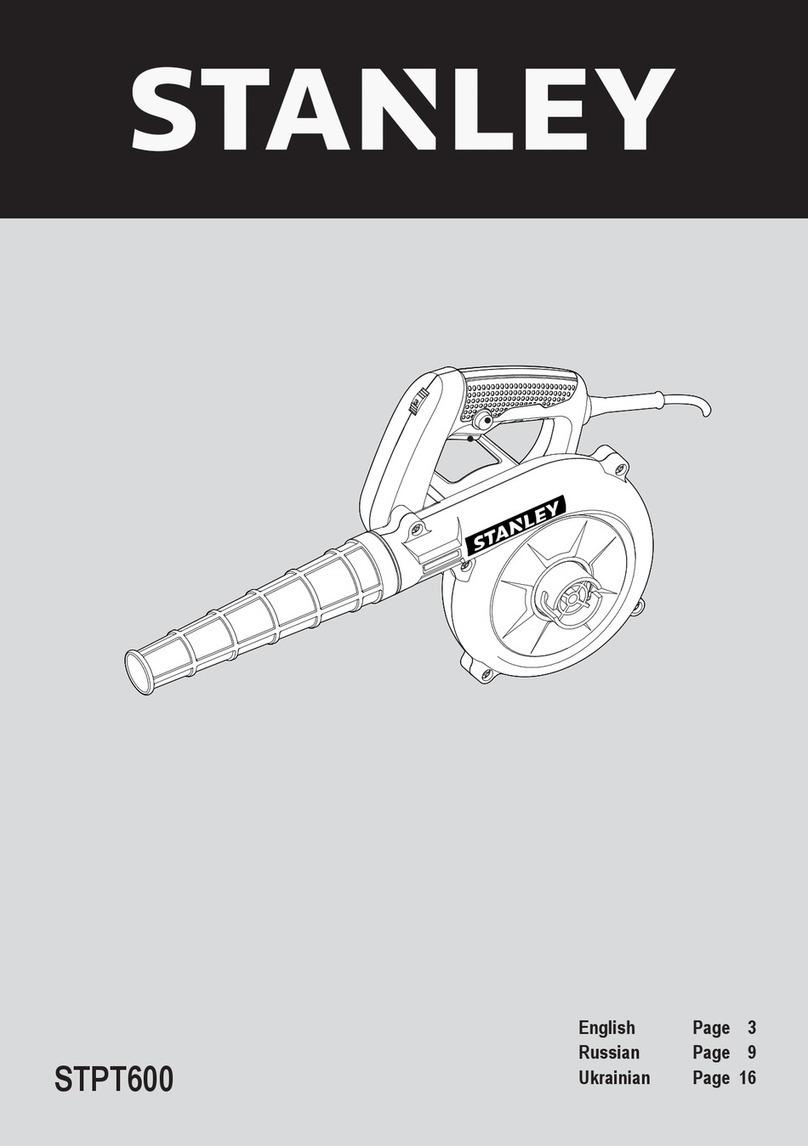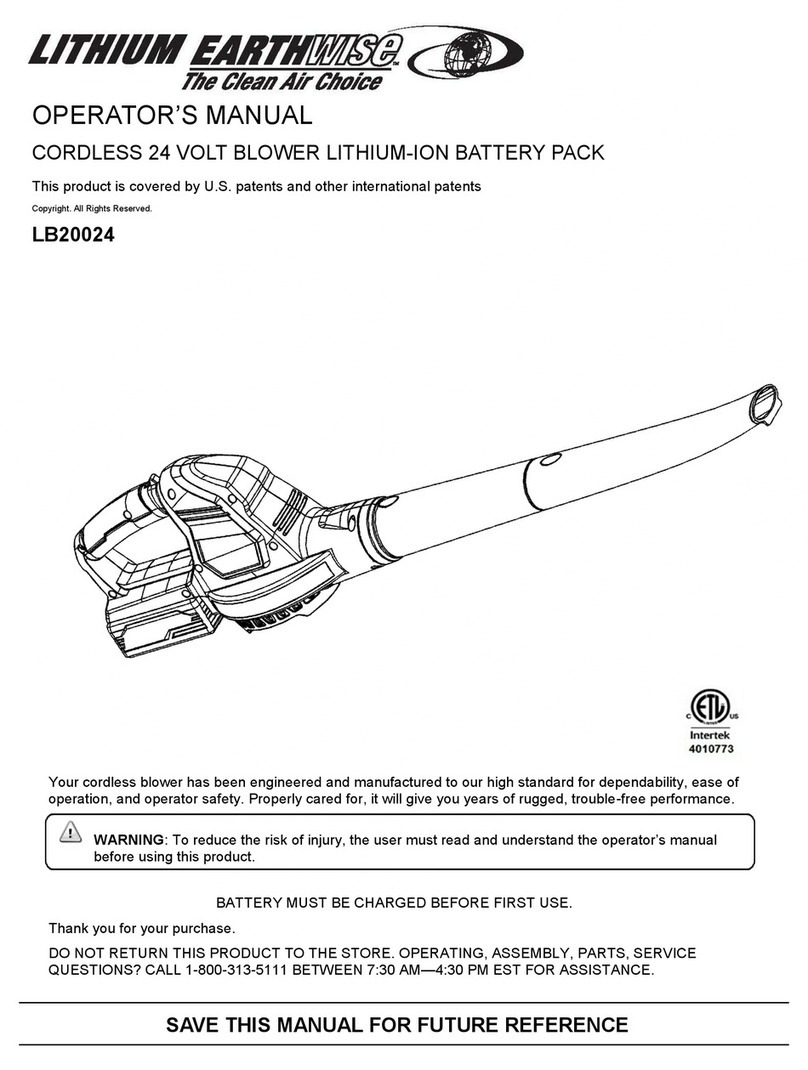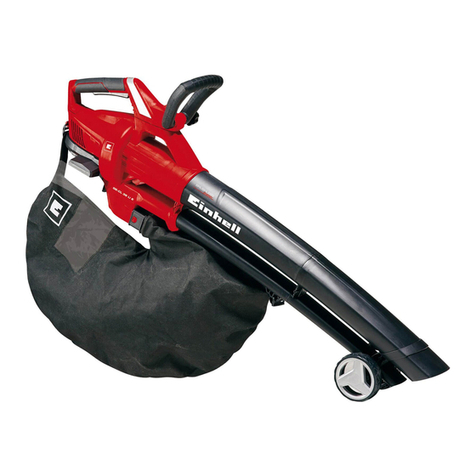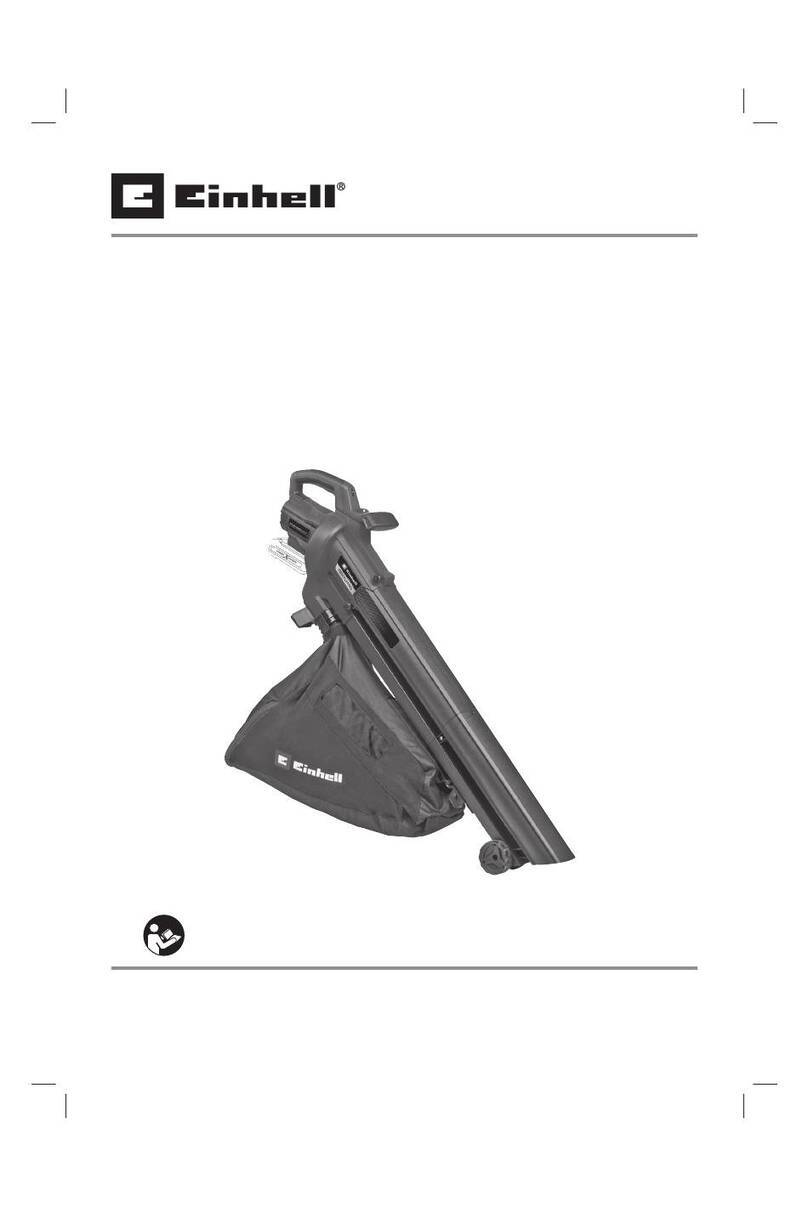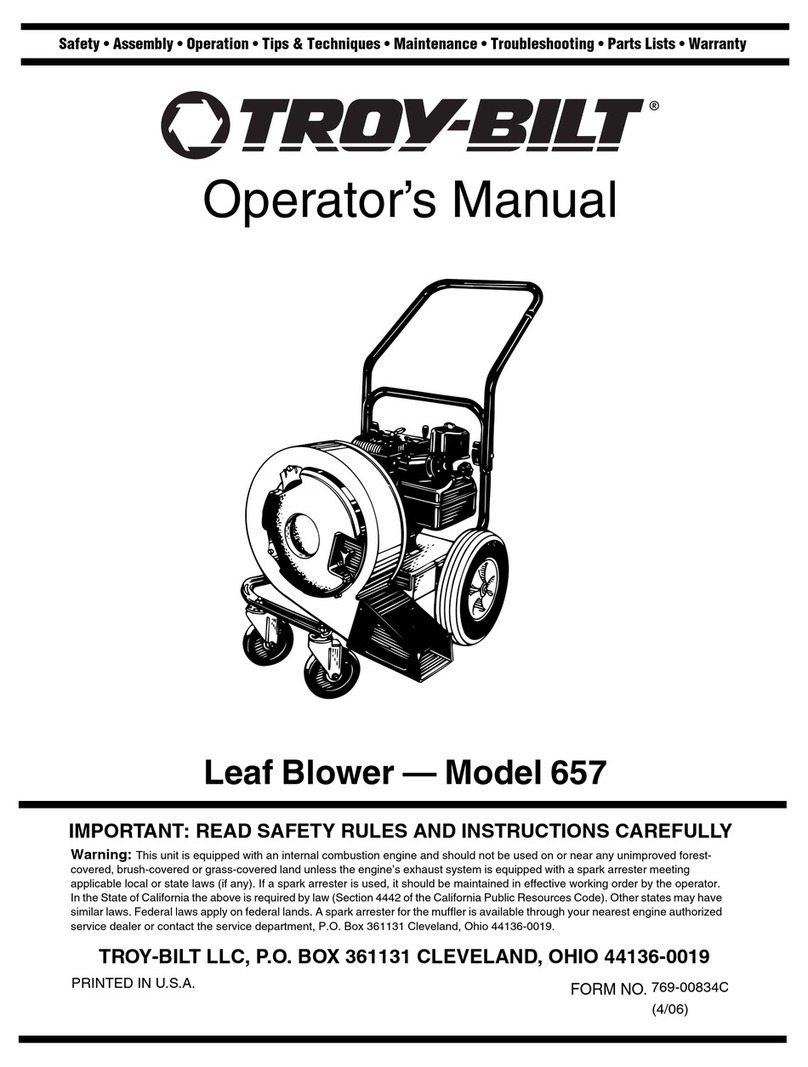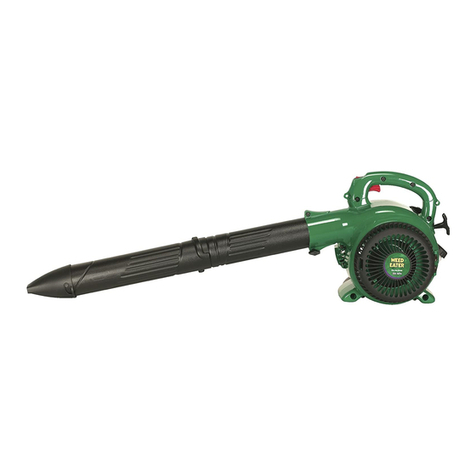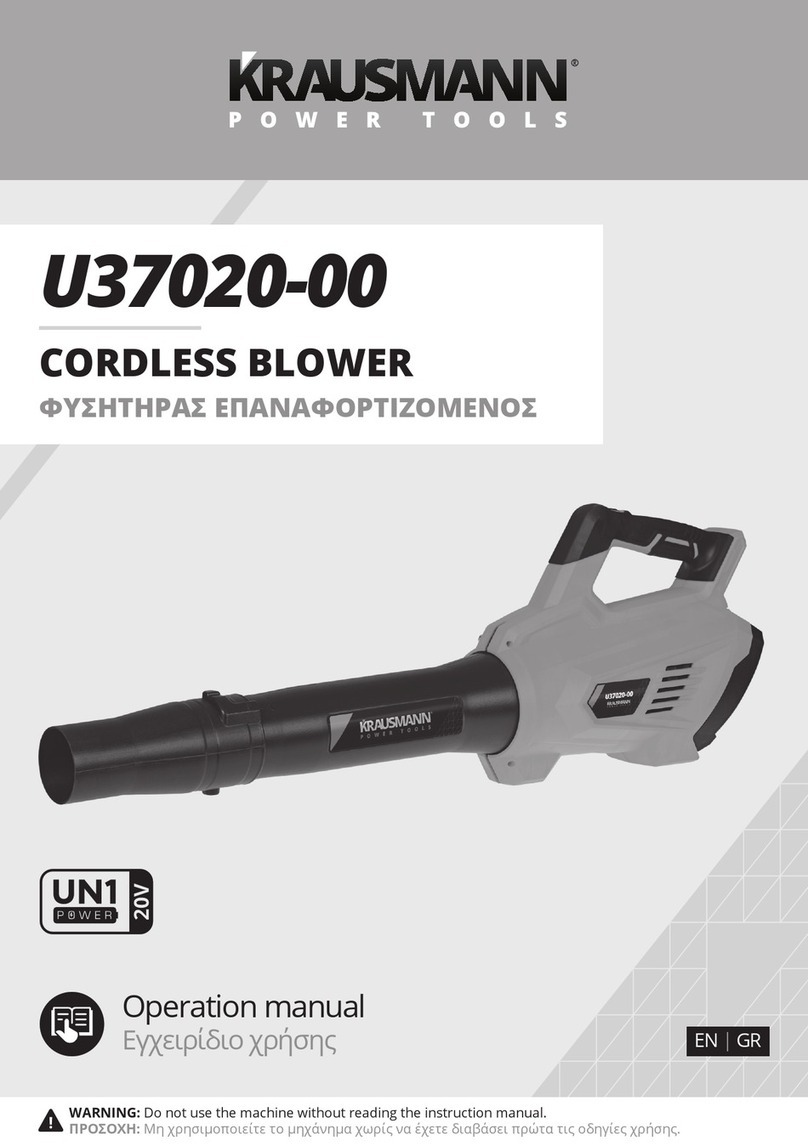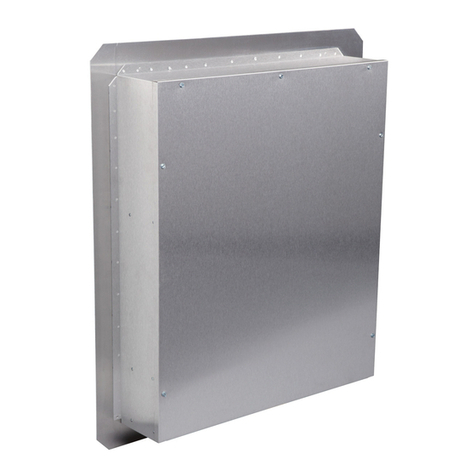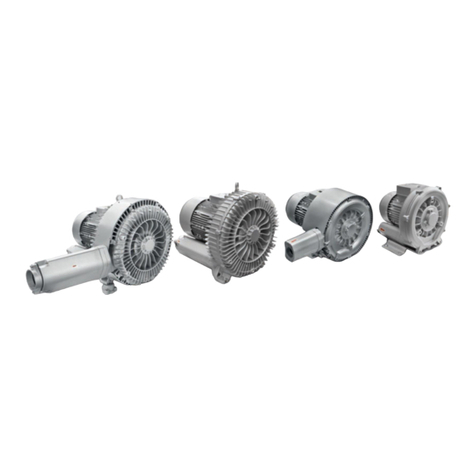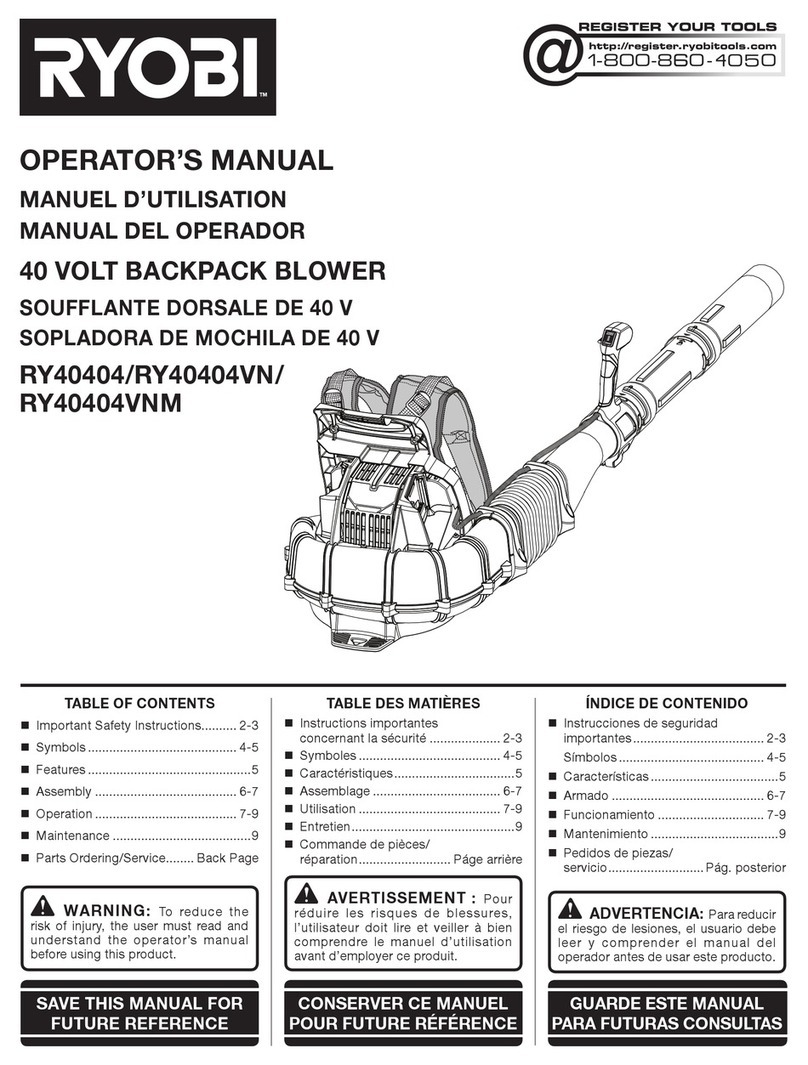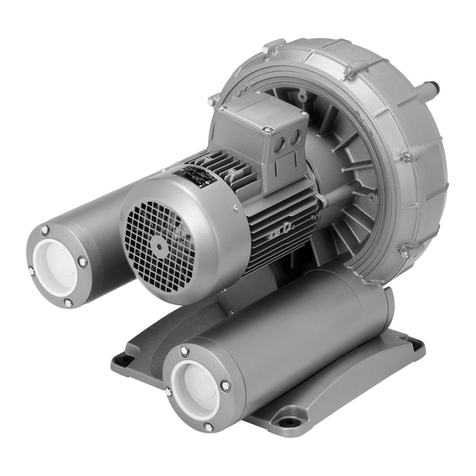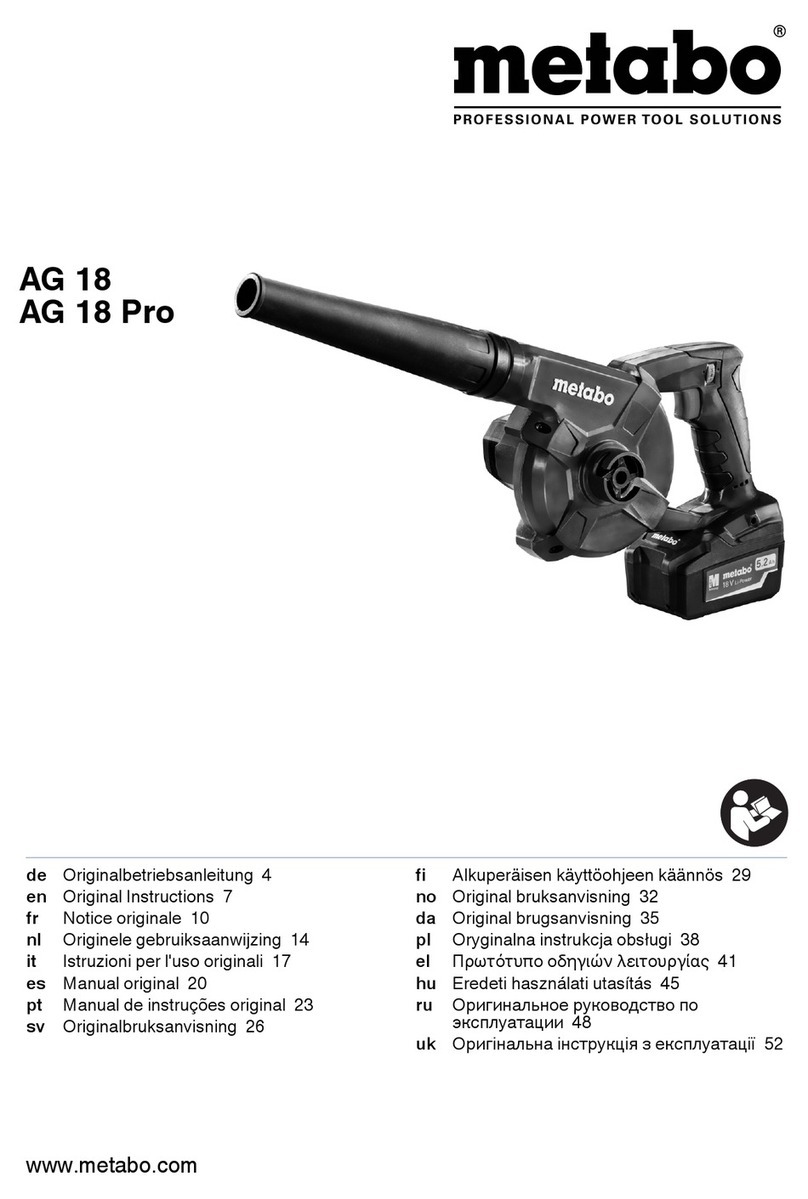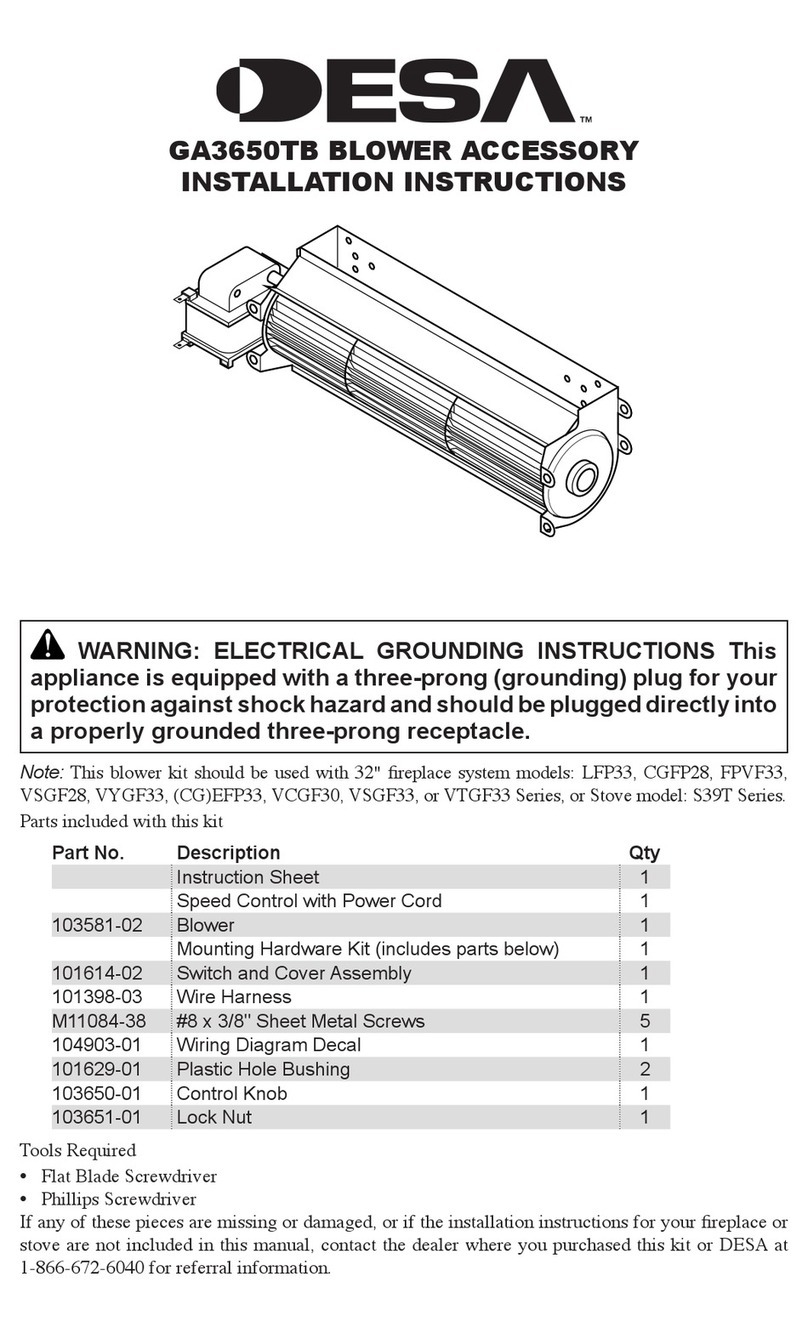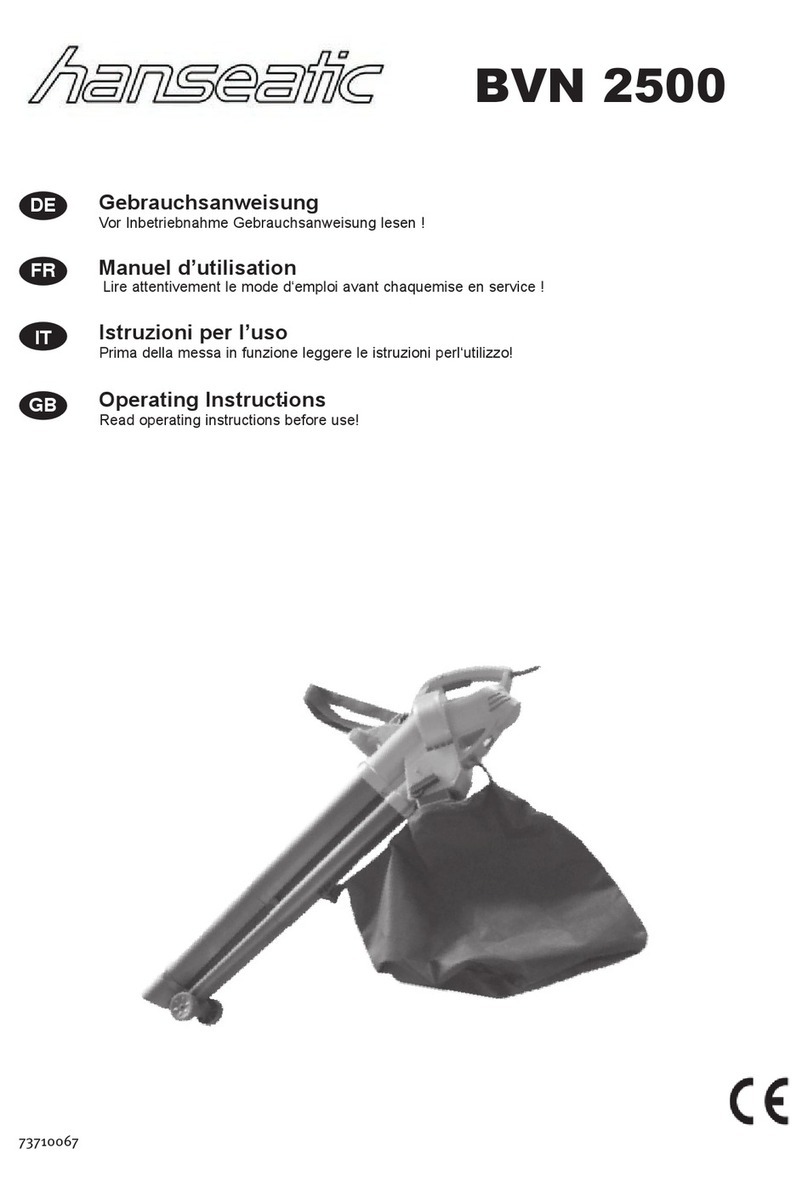
11
ENGLISH
(Original instructions)
Attachments (Fig. C, D)
Blower (Fig. C)
To connect the extension attachment(1) and end attachment
(2):
uLine up the pegs (12) on the inside of the attachment
with the notches (13) of the housing opening.
uPush the extension attachment (1) onto the blower
housing and turn left to lock. Pull on the attachment to
ensure it is securely in place.
uTo remove the extension attachment (1), turn right to
unlock and pull it off of the blower housing.
Deator (Fig. D)
To connect the inator/deator attachment 8 to the deator
intake (9) :
uLine up the detents on the attachment with the notches
on the top, bottom and sides of the intake.
uPress the adapter onto the intake.
u To remove the inator/deator attachment from the tube or
intake, pull the adapter away from the tool.
Installing and Removing the Battery Pack (Not
Supplied) from the tool
To install battery pack (Fig. E)
u Insert battery pack (6) rmly into tool until an audible click
is heard as shown in gure E. Ensure battery pack is fully
seated and fully latched into position.
To remove battery pack (Fig. D)
u Depress the battery release button (7) as shown in gure
D and pull battery pack (6) out of tool.
Prior to Operation
Warning! Make sure the nozzle always points away
from you and any bystanders.
Warning! DO NOT drop anything into the nozzle.
Correct hand position (Fig. F)
Warning! To reduce the risk of serious personal injury,
ALWAYS use proper hand position as shown.
Warning! To reduce the risk of serious personal injury,
ALWAYS hold securely in anticipation of a sudden reaction.
Proper hand position requires one hand on the main handle
as illustrated in gure F.
Switching on and off (Fig. G)
To turn the blower on, depress the trigger switch (3). As trigger
is pulled from min to max position (or
full off to full on), the airow from the blower will increase
from min to max. Release the trigger fully to turn the
blower off.
To lock the blower on, press the lock-on button (4) with the
variable speed trigger switch (3) depressed. To turn the
blower off when using the lock-on button, pull the trigger
to release the lock. Hold the blower with one hand, as
shown in Figure F, and sweep from side to side with tube
output end several inches above the hard surface. Slowly
advance, keeping the accumulated pile of debris in front of
you.
Speed Selection (Fig. G)
The 3-speed toggle switch (5) sets the maximum airow
that can be achieved when trigger is fully depressed. Push
the 3-speed toggle switch (5) up to increase air ow; push it
down to decrease air ow.
Storage hook (Optional extra) (Fig. H)
Warning! To reduce the risk of serious personal injury, place
the forward/reverse button in the lock-off position or turn tool
off and disconnect battery pack before making any
adjustments or removing/installing attachments or
accessories.
An accidental start-up can cause injury.
Warning! To reduce the risk of serious personal injury, ensure
the screw (11) holding the storage hook is secure.
Note: When attaching or replacing the storage hook (12), use
only the screw (11) that is provided. Be sure to securely
tighten the screw in the accessory attachment location (10).
If the hook is not desired at all, it can be removed from the
tool.
To move the storage hook, remove the screw (11) that holds
the storage hook (12) in place in the Accessory attachment
location (10).
Note: Various trackwall hooks and storage congurations are
available.
Please visit our website www.stanley.eu/3 for further
information.
Accessories
Warning! Since accessories, other than those offered by
STANLEY FATMAX, have not been tested with this product,
use of such accessories with this tool could be hazardous. To
reduce the risk of injury, only STANLEY FATMAX
recommended accessories should be used with this product.
Recommended accessories for use with your tool are
available at extra cost from your local dealer or authorized
service center.
Maintenance
Your STANLEY FATMAX tool has been designed to operate
over a long period of time with a minimum of maintenance.
Continuous satisfactory operation depends upon proper tool
care and regular cleaning.






















